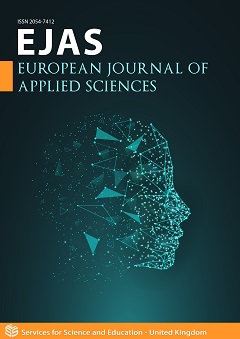Pathogenicity of the Entomopathogenic Nematodes, Steinernema carpocapsae and Heterorhabditis bacteriophora, against the Black Cutworm Agrotis ipsilon (Hufnagel) (Lepidoptera: Noctuidae)
DOI:
https://doi.org/10.14738/aivp.112.14356Keywords:
biocontrol, infectivity, mortality rate, pupae, symbiotic bacteria, virulenceAbstract
The black cutworm Agrotis ipsilon (Hufnagel) (Lepidoptera: Noctuidae), is worldwide in distribution. It is a polyphagous insect attacking nearly all vegetables and many economic field crops in the world. The objective of the present study was to investigate the pathogenicity of two entomopathogenic nematodes (EPNs), Steinernema carpocapsae (Weiser) and Heterorhabditis bacteriophora (Poinar) against 4th and 5th instar larvae of A. ipsilon. The newly moulted larvae were infected with five concentrations of each EPN and the data were recorded at 24, 48, 72 & 96 hr post-infection. The most important results could be summarized as follows. After infection of the 4th or 5th instar larvae with five concentrations of S. carpocapsae or H. bacteriophora, a dose-dependent course of the total mortality rate of infected larvae was recorded. After infection of larvae with S. carpocapsae or H. bacteriophora, the mortality rate of infected larvae increased with the increasing concentration of infective juveniles (IJs), at certain times of exposure. After infection of the 4th or 5th instar larvae with S. carpocapsae, the mortality rate of infected larvae did not increase with the increasing time interval of exposure. On the other hand, infection of the 4th or 5th instar larvae with H. bacteriophora resulted in an increasing mortality rate with the increasing time interval of exposure. After infection of 4th instar larvae, LC50 values were 16 IJs/ml and 48 IJs/ml, for S. carpocapsae and H. bacteriophora, respectively. After infection of 5th instar larvae, LC50 values were 21 IJs/ml and 62 IJs/ml, for S. carpocapsae and H. bacteriophora, respectively. Thus, S. carpocapsae was more pathogenic against A. ipsilon larvae than H. bacteriophora. Also, the 4th instar larvae were more susceptible to the nematode pathogenicity than the 5th instar larvae. A few nematode-infected 4th instar larvae could pupate at the lower two concentrations of S. carpocapsae and H. bacteriophora. A similar result was recorded after infection of 5th instar larvae with S. carpocapsae. Moreover, the infected larvae with H. bacteriophora successfully pupated at all concentrations except the highest one. In conclusion, S. carpocapsae may be an effective microbial control agent in the integrated pest management program against the destructive insect pest, A. ipsilon.
Downloads
Published
How to Cite
Issue
Section
License
Copyright (c) 2023 Ghoneim, K., Tanani, M., Hassan, H. A., Bakr, N. A.

This work is licensed under a Creative Commons Attribution 4.0 International License.






